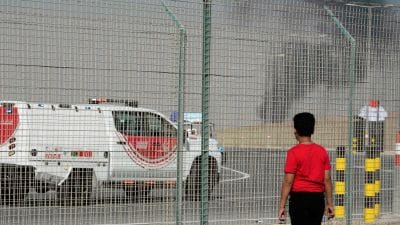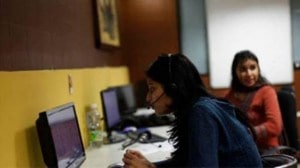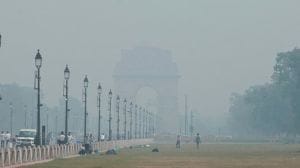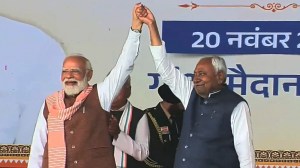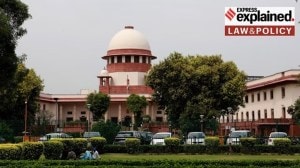Courage and the courts
The Bar and Bench at Bombay are celebrating this week the 125th year of the completion of the magnificent building housing the high court. I...

The Bar and Bench at Bombay are celebrating this week the 125th year of the completion of the magnificent building housing the high court. It is with a sense of pride that every child of the Bombay Bar must recall some glorious events played out in the theatre of a great court. The Emergency declared by Indira Gandhi in June 1975 led to the detention without trial of many Opposition leaders, including Jayaprakash Narayan, Morarji Desai, A.B. Vajpayee and L.K. Advani.
The Bombay police commissioner banned all public meetings of five persons or more. A private meeting of lawyers was called in October 1975 by N.P. Nathwani, a retired high court judge, where former chief justice, M.C. Chagla, former chief justice of India, J.C. Shah, and Nathwani would speak. The police commissioner banned the meeting on the ground that it would threaten the security of India and disturb public order. The ban order was challenged by Nathwani. Over 120 lawyers including Cooper, myself and Sorabjee, were in the fray for the petitioners led by Nani Palkhivala and Ram Jethmalani.
The first bench, Chief Justice Kantawala and Justice Tulzapurkar, both courageous and fearless judges, invalidated the order as being ultra vires, arbitrary and malafide. The locus of the petitioners even during the Emergency was upheld. The atmosphere in the court was electric. The galleries were full. During the hearing the police commissioner was summoned and cut a sorry figure when cross-examined by Ram Jethmalani. The message went round that notwithstanding the Emergency, the court will not remain silent. It was one of the finest hours for the Bench and the Bar.
In June 1957, Parliament was rocked by the LIC-Mundhra Scandal. LIC was alleged to have bought Mundhra shares at inordinately high prices to oblige the company. Under public pressure the Nehru government appointed then Chief Justice Chagla as a one member commission of inquiry. Chagla insisted on the then attorney general, M.C. Setalvad, being appointed to assist the Commission. The first public hearing started in January 1958 and the Chagla report was submitted to the government in record time in mid-February 1958.
Nehru during the inquiry in a public speech in Bombay made a strong pitch for his friend, Finance Minister T.T. Krishnamachari, obviously in an attempt to overawe the Commission. Yet Setalvad, in his summing up, strongly criticised Krishnamachari, Finance Secretary H.M. Patel and other high government officials of the LIC and Reserve Bank. Undeterred, Chagla submitted a scathing report which squarely blamed the Krishnamachari (who thereupon resigned), and H. M. Patel and other LIC and RBI bigwigs. Setalvad was criticised as having failed to protect the government as attorney general. He regarded his duty as counsel for the Commission to find out the truth in public interest and not to protect the Government. This was in the highest traditions of the Bar.
In England, Sir Hartley Shawcross and Lord Dilhorne, appearing before the Lynskey Tribunal and the Bank Rate Leak Tribunal respectively, had assumed the same stance. Dilhorne said to the Tribunal, “It is my duty to act here as in some other fields without any regard to political considerations of any kind and in discharging this duty I am not in the least concerned with — indeed I am completely indifferent to — political or personal results.”
There would be no greater champions than Setalvad and Chagla in terms of courage, integrity, independence and desire to ferret out the truth in the public interest regardless of the consequences to their personal fortunes.
The Bombay City Civil Court was established in the late forties. The principal judge was normally selected on a seniority basis. Three outstanding senior judges — B.J. Divan, V.D. Tulzapurkar and J.R. Vimadalal — were overlooked and a favourite was appointed as principal judge from the district with the concurrence of the then chief justice. The three judges threatened to resign but were persuaded by H.M. Seervai, then advocate general, to hold their hands. With matchless courage, and supported by the Bar, Seervai campaigned with the government and generated such pressure that the decision was reversed by transfer of the incumbent and the injustice was remedied. The principal judgeship went to B.J. Divan, who later retired as chief justice of Gujarat.
And finally a case which inspired Chimanlal Setalvad to join the legal profession as mentioned in his autobiography is worth recalling. The Supreme Court at Bombay — predecessor of the High Court — was manned by three English judges, Chief Justice West and Justices Chambers and Peter Grant. The judges issued a writ of habeas corpus for production of Moro Raghunath, imprisoned in Pune, and Bapu Ganesh, detained in Thane jail. The British governor refused to obey the writ twice. By this time Chief Justice West had retired and Justice Chambers had died. Sir Peter Grant, the only surviving judge, took the courageous step of announcing on April 1, 1829, that the Supreme Court at Bombay had ceased to function on all sides and would remain closed until it received an assurance from the executive that its authority would be respected and its orders obeyed. The matter went on petition by the judges to the Privy Council, who held that the court has no territorial jurisdiction. However the bold stand of Sir Peter Grant was a great blow in maintaining the independence of the judiciary. For the inquisitive and the interested, the portrait of Sir Peter Grant is one of the many which adorns the large central court in our present high court building.
Our high courts, like Calcutta, Madras, Allahabad, Patna and Nagpur, have equally long and great traditions. We must share them, rejoice in them and try to measure up to the giants of the past both on the Bench and at the Bar. For a unified Indian legal profession, the great and continuous challenge is to preserve the rule of law on the bedrock of human rights. Every generation of Indian lawyers must drink deeply at the springs of the past and reinvigorate itself by setting ever higher standards in our profession to fight this never ending battle.
The writer is a senior advocate of the Supreme Court of India



- 01
- 02
- 03
- 04
- 05


